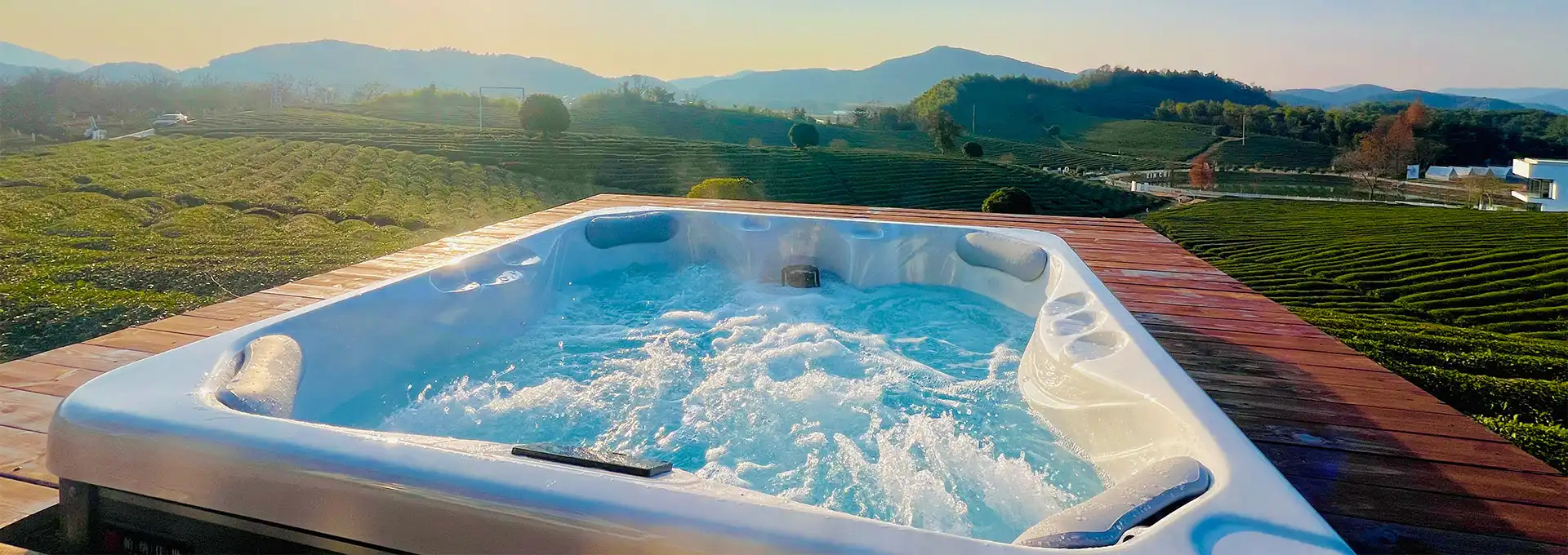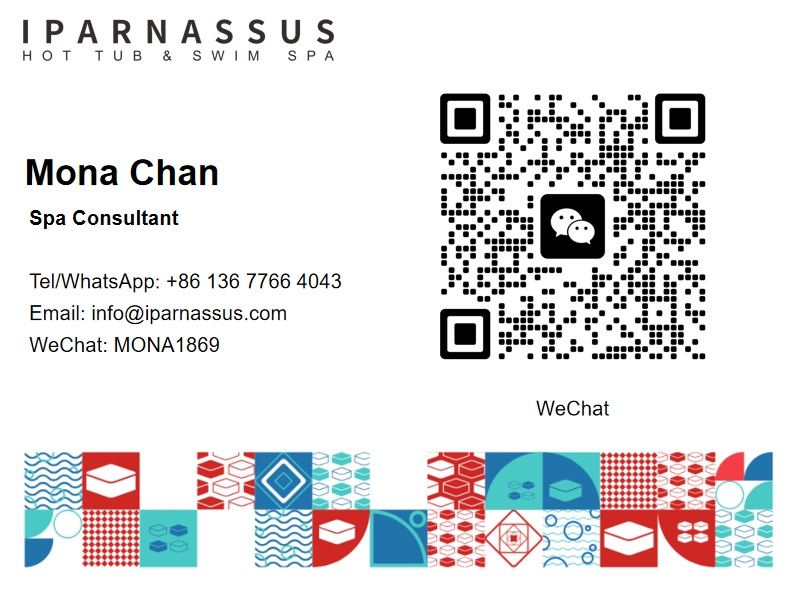How to Effectively Boost Alkalinity and Maintain Water Chemistry in a 6 Person Hot Tub?
2024-08-27 16:47:33
Maintaining the proper chemical balance in your hot tub is crucial for both the longevity of your equipment and the comfort and safety of bathers. One key aspect of water chemistry is alkalinity, which acts as a buffer to prevent rapid pH fluctuations. If you've noticed that your 6 person hot tub's alkalinity is low, you may be wondering how to boost it effectively. In this article, we'll explore various methods to increase alkalinity in your hot tub, ensuring crystal-clear water and a pleasant soaking experience.
What is the ideal alkalinity level for a 6 person hot tub?
Before diving into the methods of boosting alkalinity, it's essential to understand what the ideal alkalinity level should be for a 6 person hot tub. Total alkalinity (TA) is a measure of the water's ability to neutralize acids and resist changes in pH. For most hot tubs, including those designed for six people, the ideal alkalinity range is typically between 80 and 120 parts per million (ppm).
Maintaining the proper alkalinity level is crucial because it affects various aspects of your hot tub's performance and user experience. When alkalinity is too low, it can lead to rapid pH fluctuations, which may cause eye and skin irritation, equipment corrosion, and scaling. On the other hand, if alkalinity is too high, it can result in cloudy water, reduced sanitizer effectiveness, and scale formation on surfaces and equipment.
To determine the alkalinity level in your 6 person hot tub, you should use a reliable water testing kit. These kits usually come with test strips or liquid reagents that change color based on the water's chemical composition. It's recommended to test your hot tub water at least once a week, or more frequently if it's used often.
If you find that your hot tub's alkalinity is below the ideal range, it's time to take action to boost it. There are several methods you can employ to increase alkalinity, which we'll discuss in detail later in this article. It's important to note that while raising alkalinity, you should also keep an eye on the pH level, as the two are closely related.
For a 6 person hot tub, you may need to adjust your chemical additions slightly compared to smaller tubs. The larger water volume means you'll likely need more alkalinity increaser to achieve the desired results. However, it's crucial to follow the manufacturer's instructions and add chemicals gradually to avoid overshooting the target range.
Regular maintenance and monitoring of your hot tub's alkalinity level will not only ensure a more enjoyable bathing experience but also help protect your investment by preventing damage to the tub's surfaces and equipment. By keeping the alkalinity within the ideal range, you'll create a stable environment that makes it easier to maintain other aspects of water chemistry, such as pH and sanitizer levels.
How often should you change the water in a 6 person hot tub?
While maintaining proper alkalinity is crucial for hot tub care, another important aspect of hot tub maintenance is knowing when to change the water entirely. For a 6 person hot tub, the frequency of water changes can depend on several factors, but there are some general guidelines to follow.
Typically, it's recommended to change the water in a 6 person hot tub every 3 to 4 months. However, this can vary based on usage, bather load, and how well you maintain your water chemistry. If your hot tub sees heavy use or hosts many different bathers, you may need to change the water more frequently, perhaps every 2 to 3 months.
Several factors contribute to the need for water changes:
1. Total Dissolved Solids (TDS): Over time, the concentration of dissolved solids in your hot tub water increases. These solids come from various sources, including body oils, lotions, sweat, and the chemicals used to treat the water. As TDS levels rise, it becomes increasingly difficult to maintain proper water chemistry, including alkalinity.
2. Biofilm buildup: Despite regular sanitization, microscopic organisms can form biofilms in your hot tub's plumbing system. These biofilms can harbor bacteria and make it harder to maintain water quality.
3. Chemical buildup: The continuous addition of chemicals to maintain water balance can lead to an accumulation of by-products over time.
4. Water clarity: As the water ages, it may become more difficult to maintain crystal clear water, even with proper chemical balance.
To determine if it's time for a water change in your 6 person hot tub, consider the following signs:
1. Difficulty maintaining water chemistry: If you find it increasingly challenging to keep alkalinity, pH, and sanitizer levels stable, it may be time for fresh water.
2. Foamy or cloudy water: Persistent foam or cloudiness that doesn't clear up with normal treatment could indicate it's time for a change.
3. Unusual odors: If your hot tub water develops a strong or unpleasant smell, it's often a sign that it's time for fresh water.
4. Skin irritation or eye redness: If bathers experience increased skin irritation or eye redness after using the hot tub, it could be due to built-up contaminants in the water.
When changing the water in your 6 person hot tub, follow these steps:
1. Drain the tub completely, following the manufacturer's instructions.
2. Clean the shell thoroughly with a non-abrasive cleaner designed for hot tubs.
3. Flush the plumbing system to remove any biofilm or scale buildup.
4. Refill the tub with fresh water.
5. Balance the water chemistry, including alkalinity, pH, and sanitizer levels.
By regularly changing the water in your 6 person hot tub, you'll find it easier to maintain proper alkalinity and other chemical levels. This practice not only ensures a more enjoyable and safer bathing experience but also helps prolong the life of your hot tub and its components.
How much chlorine should I add to my 6 person hot tub?
While maintaining proper alkalinity is crucial for hot tub care, equally important is ensuring the right level of sanitizer, such as chlorine, to keep the water clean and safe for use. For a 6 person hot tub, determining the correct amount of chlorine to add requires careful consideration of several factors.
The ideal chlorine level for a hot tub, regardless of size, is typically between 3 and 5 parts per million (ppm). However, the amount of chlorine you need to add to achieve and maintain this level in a 6 person hot tub can vary based on several factors:
1. Bather load: The more people using the hot tub, the more chlorine you'll need to add to combat contaminants introduced by bathers.
2. Frequency of use: A hot tub that's used daily will require more frequent chlorine additions compared to one used only occasionally.
3. Water temperature: Higher water temperatures can cause chlorine to dissipate more quickly, necessitating more frequent additions.
4. Presence of organic matter: Leaves, insects, and other debris can increase chlorine demand.
5. Sunlight exposure: UV rays from sunlight can break down chlorine more quickly in outdoor hot tubs.
To determine how much chlorine to add to your 6 person hot tub, follow these steps:
1. Test the current chlorine level using a reliable test kit.
2. Calculate the volume of your hot tub if you don't already know it. A typical 6 person hot tub holds between 350 to 450 gallons of water.
3. Use the chlorine product's instructions to determine how much to add based on your tub's volume and the current chlorine level.
4. Add the chlorine gradually, retesting after each addition to avoid overshooting the target range.
As a general guideline, for a 6 person hot tub with a volume of about 400 gallons, you might need to add about 1 to 2 tablespoons of granular chlorine or 1 to 2 chlorine tablets (1-inch size) per week under normal use conditions. However, this can vary significantly based on the factors mentioned earlier.
It's crucial to note that chlorine effectiveness is closely tied to pH and alkalinity levels. If your hot tub's alkalinity is not within the ideal range (80-120 ppm), it can affect chlorine's ability to sanitize effectively. This is why maintaining proper alkalinity, as discussed earlier, is so important.
Here are some tips for maintaining proper chlorine levels in your 6 person hot tub:
1. Test the water at least 2-3 times per week, or daily if the tub is used frequently.
2. Add chlorine after each use, especially if multiple people have been in the tub.
3. Shock the hot tub weekly or bi-weekly to break down contaminants and reactivate the chlorine.
4. Keep the hot tub covered when not in use to prevent chlorine loss due to UV exposure.
5. Maintain proper pH (7.2-7.8) and alkalinity (80-120 ppm) to ensure chlorine works effectively.
6. Consider using a chlorine floater or an automatic chlorinator for more consistent sanitizer levels.
Remember, while chlorine is crucial for sanitization, it's just one part of the overall water chemistry balance. Always consider how changes in chlorine levels might affect other aspects of your hot tub's water chemistry, including alkalinity.
By carefully managing chlorine levels along with alkalinity and other chemical parameters, you'll ensure that your 6 person hot tub remains a safe, clean, and enjoyable retreat for all users.
For more information on hot tub installations and to find out more about our products, please feel free to contact us at info@iparnassus.com.
References:
1. Hot Tub Insider. (2023). Hot Tub Water Chemistry 101: Balancing pH and Alkalinity.
2. Swim University. (2024). How to Raise Alkalinity in Your Hot Tub.
3. Aqua Magazine. (2022). Understanding and Managing Hot Tub Water Chemistry.
4. Hot Spring Spas. (2023). The Ultimate Guide to Hot Tub Maintenance.
5. Pool Research. (2024). Hot Tub Water Change Frequency: When and How Often?
6. Leslie's Pool Supplies. (2023). Hot Tub Water Care Basics: Chlorine vs. Bromine.
7. Bullfrog Spas. (2024). Hot Tub Chemistry: A Comprehensive Guide.
8. The Spruce. (2023). How to Balance pH and Alkalinity in Your Hot Tub.
9. Master Spas. (2024). Hot Tub Maintenance Schedule: Daily, Weekly, and Monthly Tasks.
10. Hot Tub Owner HQ. (2023). The Complete Guide to Hot Tub Chemicals and Water Care.
Send Inquiry
Related Industry Knowledge
- How Long After Putting Chlorine in Hot Tub?
- Is the Hot Tub Good for Sore Muscles?
- Are Hot Tubs Good for Muscle Recovery?
- How to connevt to bluetooth on a swim spa?
- Should I Insure My Backyard Swim Spa?
- How Much Is A Swim Spa Hot Tub Combo?
- How to Tell If Hot Tub Fuse is Blown?
- How large is a hot tub?
- How to Winterize a Jacuzzi Hot Tub?
- Best Materials for Outdoor Hot Tubs?



